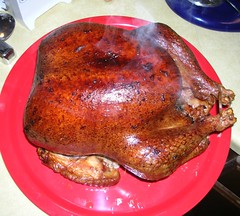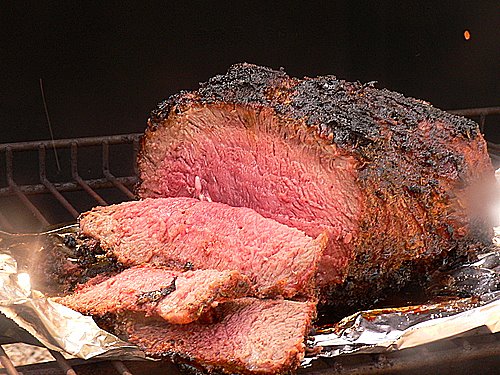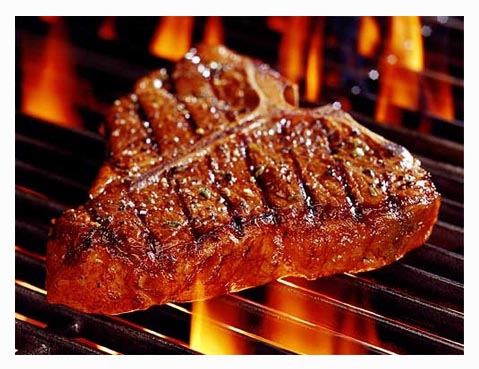You should get a food processor if you don't already have one. In fact, go out and get one today! Out of every appliance in my kitchen, it is my absolute favorite, and I use it constantly. In fact, I never put it away. I have a small processor for fast shopping or veggies and herbs and a large 14-cup processor to make all sorts of wonderful concoctions. So again, if you don't have one of these marvels, you need to get one.
Here are my top ten favorite things to make using a food processor.
1. Peanut butter cookies, the easiest recipe in the world: 1 cup sugar, 1 egg, 1 cup peanut butter, and a teaspoon of vanilla if desired. Toss them into your processor; give it a whirl for a few seconds until well mixed. Scoop out a tablespoon of dough and scrap it on the side of the bowl to even the spoon, drop onto a cookie sheet and smash it down with a fork to make the cross hatch design. Bake at 350 degrees for 7 to 9 minutes and you have fabulous, gluten free peanut butter cookies.
2. Specialty butters are definitely a favorite of mine. In fact, I get ideas from many restaurants, constantly seeking new flavors to spread across bread. Armed with my food processor, making specialty butter has never been so easy. My favorite is basil-garlic butter. By processing a stick of butter with a couple cloves of garlic, I can then add some crushed basil leaves and let it sit in the fridge for a week or so in an air-tight container. Then, it's French bread and wine for dinner. Sometimes I even use it on grilled cheese with mozzarella, sliced tomatoes, and bacon. So delicious!
3. Make steak sandwiches by chilling, but not freezing, leftover steak in the freezer until firm but not frozen. Slice with your processor and then add to a skillet in which you have been sautéing bell peppers and onions. Put it all on a sandwich bun, top with jack cheese, and enjoy. I know, who has leftover steak? Plan for this and throw an extra steak or two on the grill next time.
4. One of my favorite uses for a food processor is making soup when I've had a hard day. Some chopped onion, garlic, milk, a bit of flour, chicken broth, broccoli, cheese, and pepper can be easily put together to make an excellent meal. After sautéing the onions and garlic, add all ingredients except milk and flour and cheese, cooking over medium heat for 10 minutes. Afterward, combine with milk and flour and cook an additional 5 minutes, then let cool while adding cheese until it melts. Place in a food processor, and you have smooth, creamy broccoli-cheese soup that can relieve any stress-filled day.
5. Want to make a great hollandaise sauce in a short amount of time? Take ¾ cup of butter and melt it. Then take three egg yolks, 1 tablespoon lemon juice, 1 tablespoon water, and a teaspoon of Dijon mustard and mix on high in your food processor, slowing adding the melted butter. Add a bit more lemon juice, some cayenne, and some salt to taste, blending well, and store the mixture for 30 minutes.
6. Puree unsalted and lightly seasoned foods for your baby and save on the cost of canned or bottled baby food. On the flip side of life, you can puree foods for the elderly who have denture issues.
7. I make dips and spreads with my processor; my favorite is a pureed cucumber and cream cheese dip. Sorry, secret family recipe.
8. I am a huge fan of chocolate, and my food processor allows me to take melted chocolate chips, some tofu, salt, 3 egg whites, half a cup of sugar, and a quarter cup of water and turn it into a light, chocolaty masterpiece. My chocolate mousse is a favorite amongst all of my friends, and can be topped with either grated chocolate, whipped topping, or both!
9. To chop nuts, I use the shredding disc which makes the pieces more uniform in size and doesn't make the texture too fine or risk turning the nuts to butter.
10. My 14 cup processor will hold an 18.5 ounce cake mix. I can have the cake ready to bake in less time than it takes me to haul my big mixer out and find the correct beater.
There it is; my list of top 10 favorites. Keep your processor accessible, and you'll be amazed at how quickly you come up with your own top 10 list.
















